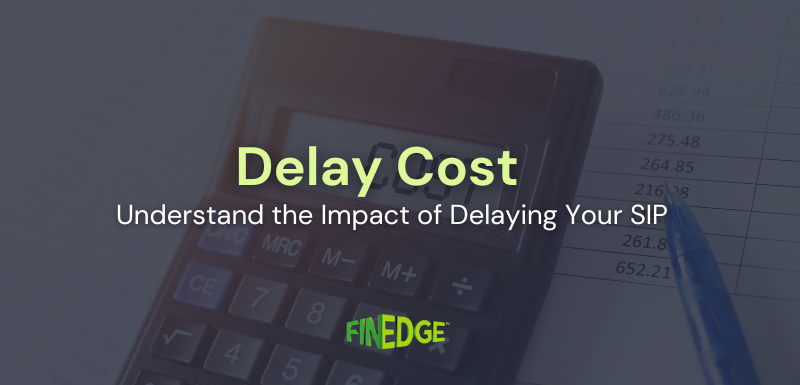How SIP and Step-Up SIP Calculators Help You Plan Better
- SIP calculators help you estimate your corpus or monthly investment needs.
- Step-up calculators align your SIPs with future income growth.
- Use reverse SIP calculators to plan with goals in mind, not just numbers.
- Always use these tools before picking funds - they provide the map before the vehicle.
Starting a SIP is easy. But knowing how much to invest, for how long, and whether you should increase it annually? That’s where most investors struggle. This is where a SIP calculator, and even better, a step-up SIP calculator, can guide you. These tools aren’t just digital widgets; they bring structure and clarity to your financial journey, ensuring your SIPs are aligned to real-world goals.
What Does a SIP Investment Calculator Actually Do?
A SIP calculator helps you understand the relationship between three things:
-
Monthly SIP amount
-
Expected returns
-
Investment duration
Based on your inputs, the calculator estimates the final corpus you could accumulate over time. It's a powerful tool for anyone who wants to translate their investing effort into tangible future outcomes.
Goal-First Planning: Calculators That Work in Reverse
Many modern SIP calculators now work in reverse. Instead of inputting how much you want to invest, you start with:
-
Your target corpus (say, ₹50 lakhs for a child's education),
-
A goal timeline (say, 12 years), and
-
An assumed rate of return (say, 11%).
The calculator then shows you how much you need to save monthly to reach that goal. This goal-first planning approach is especially useful for investors who want to make their SIPs purpose-led and outcome-driven.
Plan Your Goals with FinEdge’s SIP Calculator
Why Step-Up SIP Calculators Are a Game-Changer
A standard SIP calculator assumes your SIP stays constant. But in reality, most investors earn more over time and can afford to increase their SIPs.
A step-up SIP calculator allows you to:
-
Increase your SIP annually by a fixed amount or percentage.
-
Model real-world salary hikes or business income growth.
-
See how even small annual increases can significantly improve your final corpus.
Example
For example, a monthly SIP of ₹5,000 growing at 10% per year can generate almost 30% more corpus than a flat ₹5,000 SIP over 15 years.
Estimate your Step Up SIP amount with FinEdge’s Step Up SIP Calculator
Can You Factor in Lumpsums or Bonus Investments?
Yes. Some advanced SIP calculators also allow you to simulate:
-
Annual lump sum boosters (like year-end bonuses),
-
One-time windfalls,
-
Periodic top-ups.
This gives you a more realistic picture of how your wealth can grow with a combination of discipline and flexibility.
Why You Should Always Start With a SIP Calculator
Before choosing funds, a SIP calculator helps you:
-
Define your monthly investment amount based on goals.
-
Avoid under-saving or over-committing.
-
Feel confident and in control of your financial journey.
It also ensures that your SIPs are not random numbers, but purposeful steps toward real-life aspirations.
FAQs
Your Investing Experts
Continue Reading
Cost of Delay in Investment: Why Starting Early Matters
Many investors assume that postponing their SIP temporarily has a minor impact. In reality, the true loss comes from the compounding opportunity that disappears with every missed month. A consistent approach is far more powerful than trying to compensate later by investing larger amounts.
How to Cancel Your SIP Online: A Step-by-Step Guide
Stopping a Systematic Investment Plan (SIP) is simple but following the right steps ensures your cancellation request is processed smoothly without delays.
How to Build a ₹1 Crore Portfolio: A Practical Guide for Indian Investors
Reaching ₹1 crore isn’t about luck or timing, it’s about discipline, consistency, and the patience to let compounding work in your favor.
.png)

.png)
